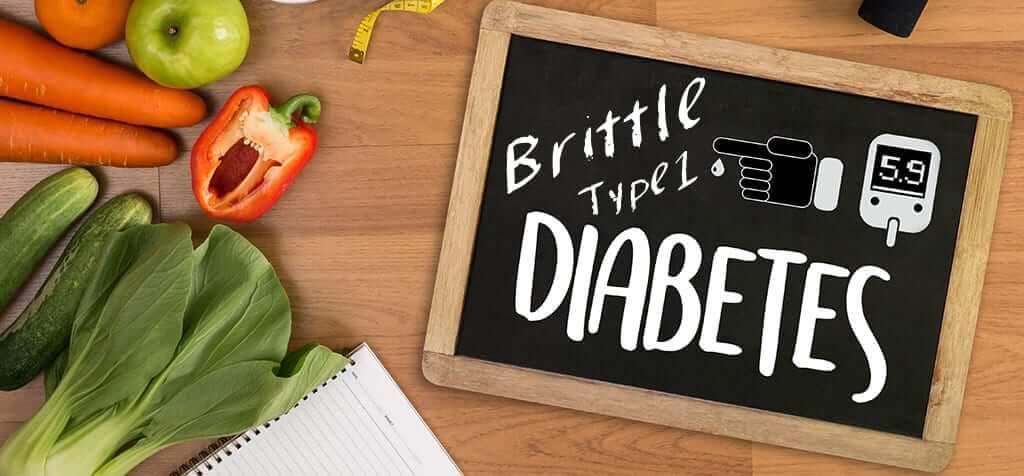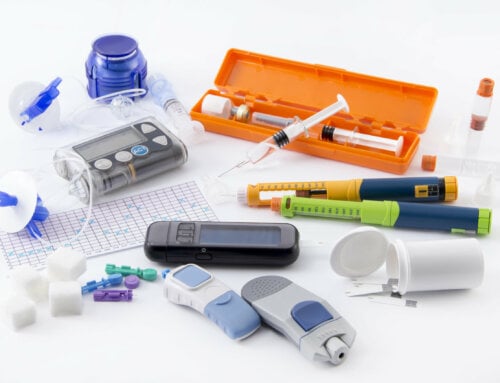“Due to the increase in prevalence of type 1 diabetes, a new report projects the global type 1 diabetes costs to reach over 25 billion dollars by 2024.” Type 1 diabetes is considered an autoimmune disease that effects the beta cells of the pancreas where insulin is formed. It comes on rapidly and exogenous insulin via shots or by an insulin pump is needed for survival. At this point in time, one in five health care dollars goes to diabetes. By 2050, there will be 5 million cases of type 1 diabetes in the US. There is a doubling of type 1 diabetes cases every 5 years and a noticeable increase in those in their 30s, 40s and 50s being diagnosed. At this point in time, there are no answers as to why type 1 diabetes is increasing. For many years, it was thought that type 1 brittle diabetes (BT1D) did not exist and that it was just a problem of “not really managing or paying attention to your diabetes.” According to the NIH (National Institutes of Health), “brittle diabetes is considered a rare disease that affects 4500 people in the USA.”
The NIH set up a specific website for BT1D and “acknowledged its existence in 2013.” Those with BT1D suffer from more episodes of serious blood sugar fluctuations, more hospital visits, more complications and less ability to work than people with controlled type 1 diabetes. The NIH states, “BT1D suffer from more hypoglycemia and more hyperglycemia regardless of the medical treatment.” Their quality of life is highly impacted. There is an organization called The Brittle Diabetes Foundation (BDF) which suggests to patients with this entity “to shop around for a good board-certified endocrinologist” and helps them understand what they can do to help themselves. BT1D can affect people at any age but seems to be more prevalent in younger women.
What Differentiates Type 1 Diabetes From BT1D?
The diagnosis is made when the patient has frequent episodes of huge blood sugar swings and variations which require multiple E.R. visits or when a patient is hospitalized long-term without the ability to stabilize blood sugars no matter what medical treatment is offered. The key difference remains, “BT1D is uncontrollable, unstable and unpredictable when dealing with blood sugars even when following the medical playbook.”
What Conditions Add to the Brittleness of This Diabetes?
There is evidence that BT1D is caused by a secondary condition other than type 1 diabetes which adds to the difficulty in achieving blood sugar control. Examples of added causes could include celiac disease, adrenal and thyroid hormonal issues or gastroparesis.
Tell Me About Celiac Disease
Celiac disease is an immune disease like type 1 diabetes. It is a reaction that occurs when certain people who are gluten intolerant eat gluten, a protein which is found in wheat, barley and rye. By ingesting gluten, a reaction occurs in the small intestine and eventually it can cause malabsorption, fatigue, weight loss, severe bloating, anemia and more serious complications. Celiac disease can be hereditary and is more common in those with type 1 diabetes. When celiac disease and type 1 diabetes are both diagnosed together, a referral to a CDE dietitian who specializes in celiac disease should be considered. There are so many gluten-free foods available now which should make eating a variety of foods much easier than it used to be.
What About Adrenal and Thyroid Hormonal Irregularities?
Hormonal irregularities will likely add problems to achieve control in those with type 1 diabetes. Both hyperthyroidism and hypothyroidism can cause massive blood sugar swings. Hyperthyroidism can lead to elevated blood sugars and hypothyroidism can lead to low blood sugars. Thyroid issues are considered an auto-immune problem like type 1 diabetes and are more common with type 1 diabetes. Medications are often given to help regulate thyroid levels. Adrenal gland fatigue goes hand in hand with type 1 diabetes. If cortisol levels are off, then blood sugar levels will most likely be off too.
And Gastroparesis?
Gastroparesis, “is a condition in which your stomach can’t empty itself of food in a normal fashion.” It is an unpredictable situation since we do not know how fast or slow the stomach will empty which has a huge impact on blood sugar control and timing of insulin. Uncontrolled diabetes is one cause of gastroparesis. There is no cure for this condition, but diet modification seems to help. Eating smaller meals which are low in fat and fiber help the stomach emptying time and lead to better blood sugar control timed with proper insulin amounts.
Are There Other Possible Culprits for BT1D?
There are a total of 18 causes of BT1D found on the BDTYPE1.com website including low levels of vitamin D which can be treated easily with supplemental vitamin D. Check the site to see what else may cause BT1D.
Can A1C Values Be An Indicator of Good Blood Glucose Control with BT1D?
No. Since there are large blood sugar swings, the overall average may look good but could be very misleading. The A1C, “does not provide a measure of glycemic variability.” The lows cancel out the highs in BT1D. Your endocrinologist should be very aware of this and use other parameters such as CGM (continuous glucose monitoring) to see what is happening hour to hour and day to day with your levels.
What Can Help Identify BT1D Versus Type 1 Diabetes?
Glycomark offers a new diagnostic tool “which measures glycemic variability.” It has not been accepted by many physicians who still consider type 1 diabetes and BT1D as the exact same disease. “Glycomark provides more information of glycemic changes by measuring daily peak glucose levels during a 2-week period.”
Are There Specific Guidelines for Physicians to Follow for BT1D?
Unfortunately no. There are no formal guidelines which makes treatment of BT1D much more complex. Finding an empathetic and knowledgeable endocrinologist is the best advice for best treatment.
What About The Effects of Drinking Alcohol on Type 1 or BT1D?

What is DKA (Diabetic Ketoacidosis)?
DKA is much more common in type 1 diabetes and BT1D. It is when blood sugars soar since insulin levels go to a critically low level. Reasons for DKA can vary from missing insulin shots, misplaced pump insulin due to tubing or insertion problems, having an acute infection or illness, or even experiencing high levels of stress. Due to low levels of insulin, glucose can’t enter the cells to be used for energy. Instead, stored fat is broken down and a fat byproduct called ketones are made. Ketones accumulate in the bloodstream and make the blood acidic. There are symptoms associated with DKA. They include increased thirst, rapid breathing, increased urination, nausea and vomiting, exhaustion, stomach pain and fruity breath, dehydration, and a rapid decrease in blood pressure. Untreated DKA is a critical situation and can result in coma and possible death. Treatment for DKA is crucial and should take place in a hospital setting/emergency room. It includes receiving IV fluids, insulin and electrolytes.
How About Exercise Precautions and Type 1 /BT1D?
In most people with diabetes, exercise generally decreases blood sugars. Unfortunately, with BT1D, blood sugars can go up or down with exercise. Exercises regimens and programs should be approved by your endocrinologist and health care team. Each program should be individualized for BT1D patients and “trial and error” may be needed. Basic guidelines for type 1/ BD1D and exercise should include staying hydrated, monitoring blood sugars, having glucose gels or drinks with you for long distance training and testing for ketones when blood sugars reach 250. If ketones are present, do not continue to exercise and seek medical help to reduce the risk of DKA. Always wear medical identification stating diabetes, carry a phone, have water, cash and glucose sources. Preferably, exercise in a group setting or at least with one other support person who knows your situation.
Nutrition Too
The guidelines for eating with type 1 or BT1D should remain similar with guidance from a CDE/dietitian. Eating balanced meals and snacks, counting carbohydrates, drinking unsweetened beverages, watching portion sizes and meal timing still are suggested by the ADA. Eating may also require trial and error and requirements may often change.
Type 1 diabetes affects 5-10 % of the population in the US with an even smaller population of those with BT1D. Patients who are affected need to be recognized and treated properly to maintain their best health. If you believe you may have BD1D and are not getting proper care, you need to explore your options further.
Have a question or comment? Then post below, no registration required. I would love to hear from you!
NOTE: Consult your Doctor first to make sure my recommendations fit your special health needs.







My sister has brittle diabetes – could you suggest a good endocrinologist
In the so. California area?
I was told that I am a britttle diabetic. I am in search of a meal plan. I need help, can you direct me. I am just shy of 50 and have had two heart attacks In the last year and a half. This diabetes is really racking on my body. Any direction would be a blessing. Thank you. Shalom